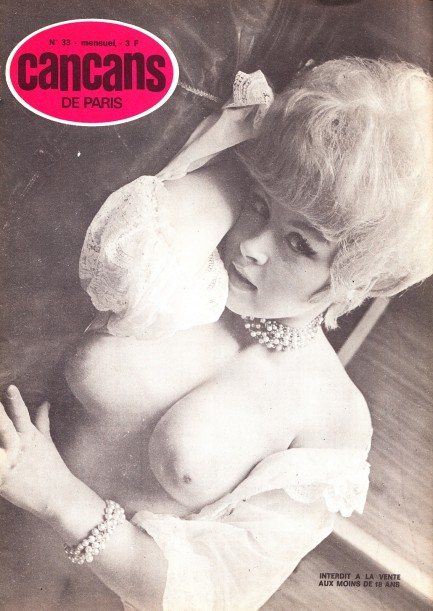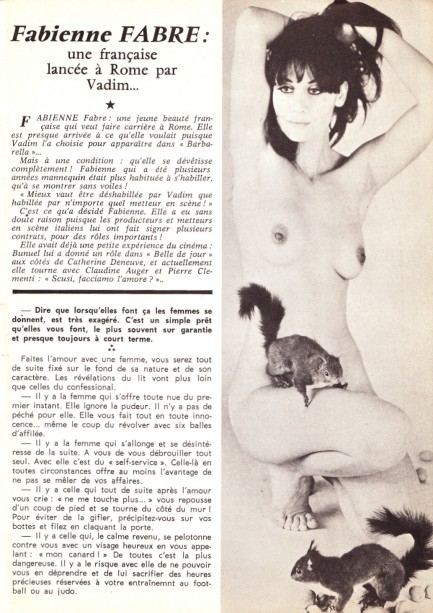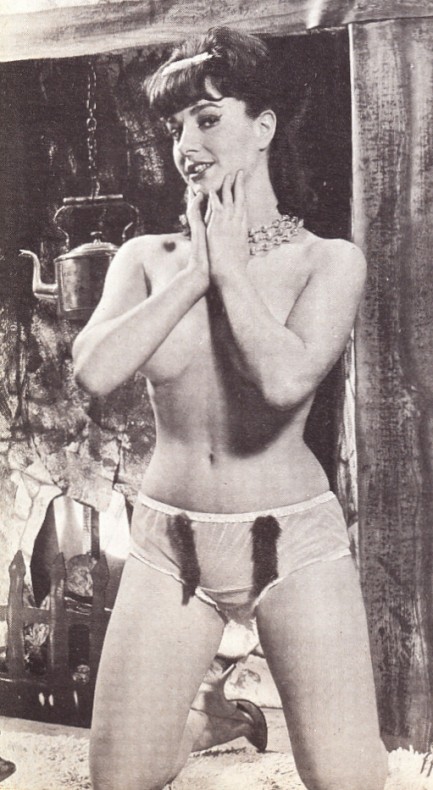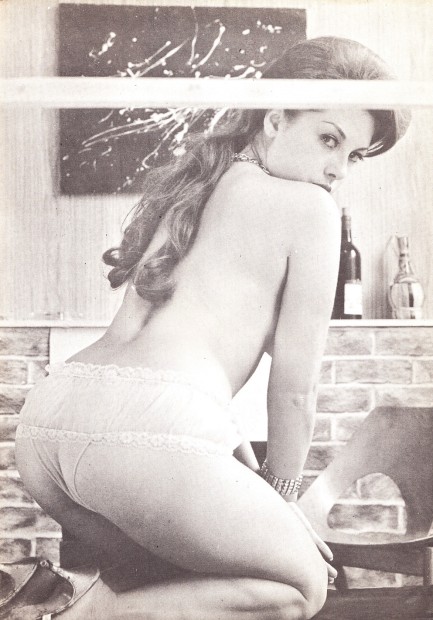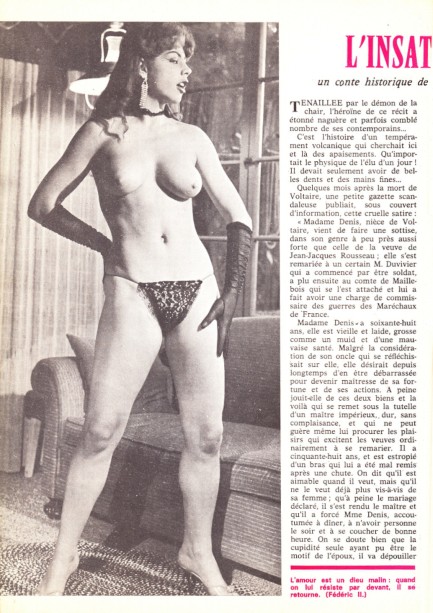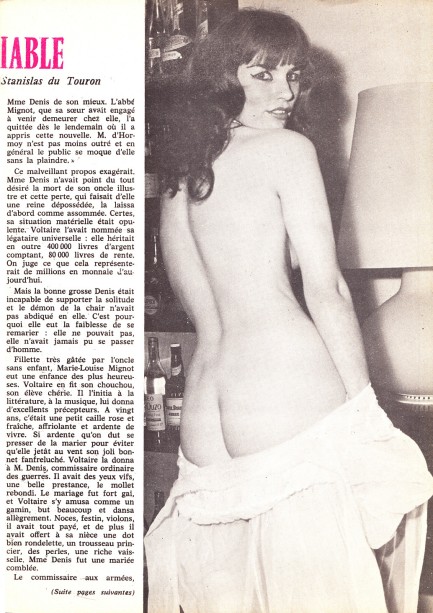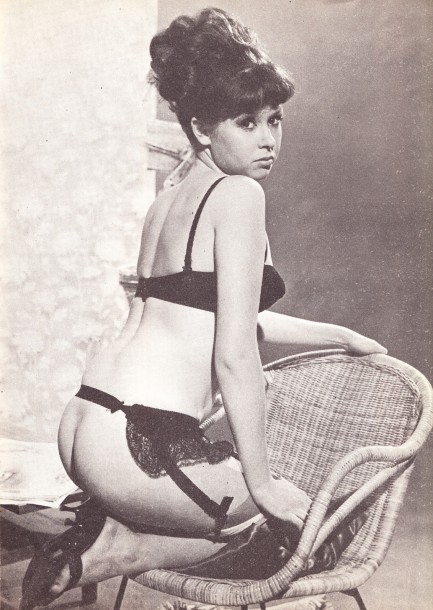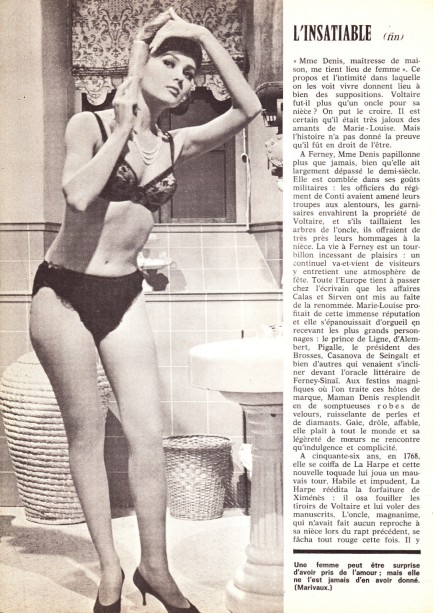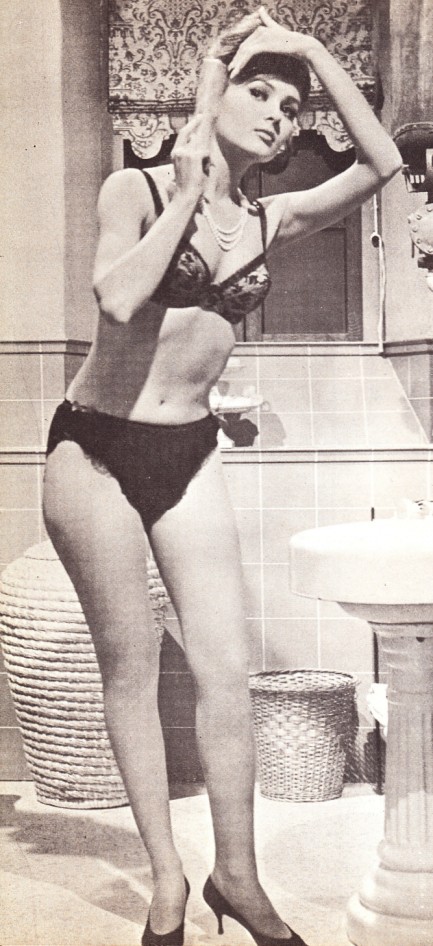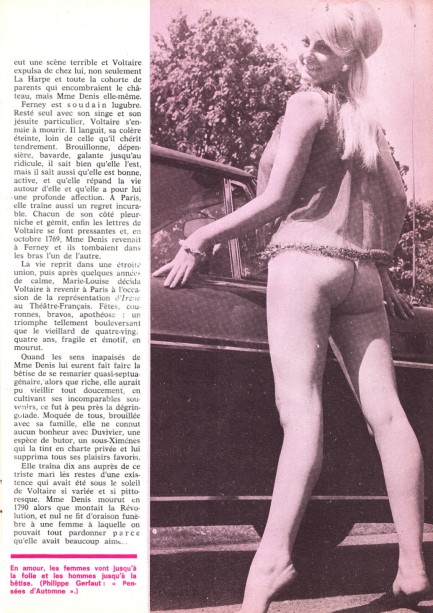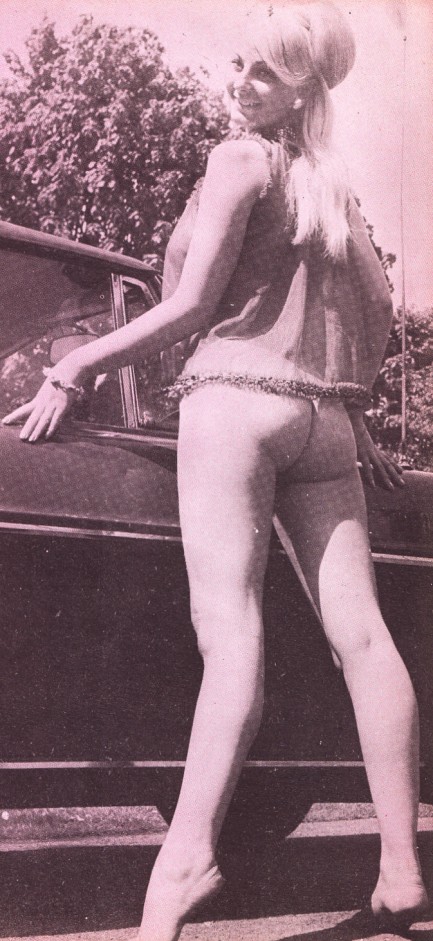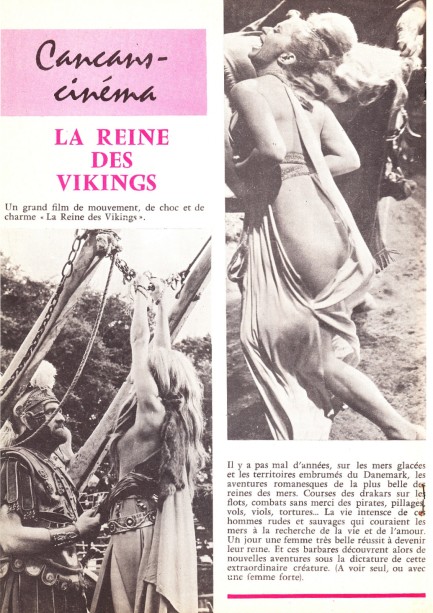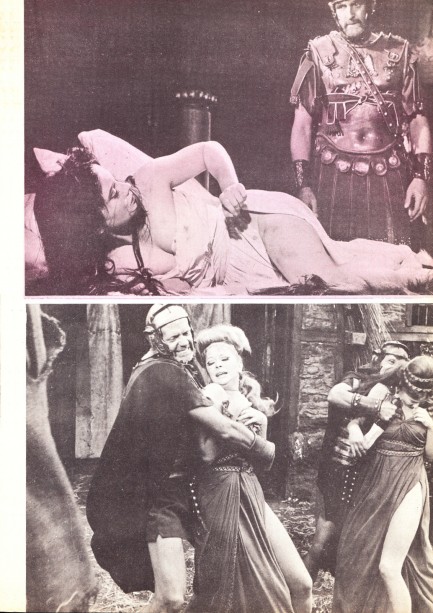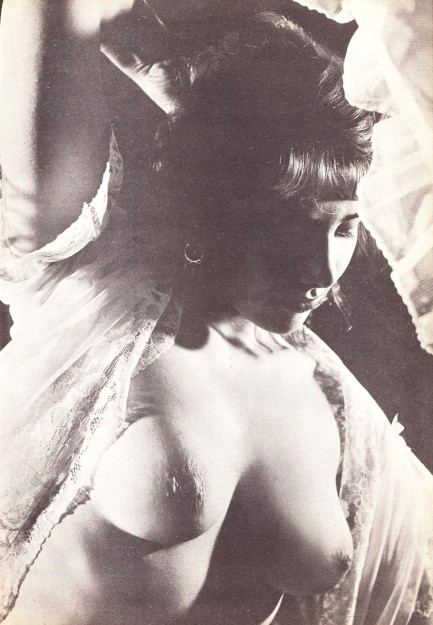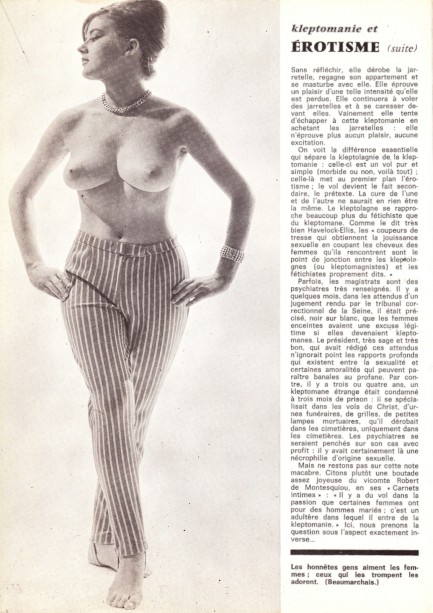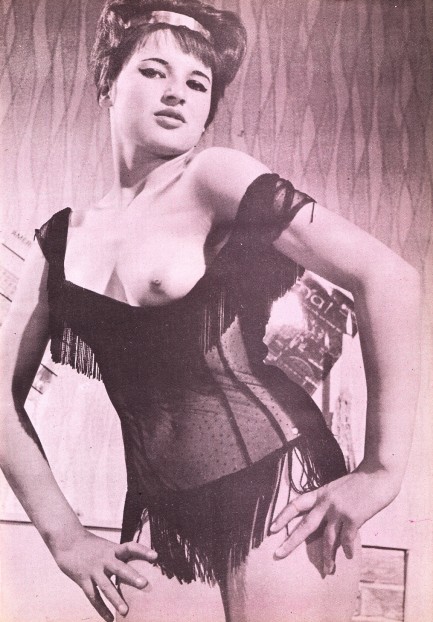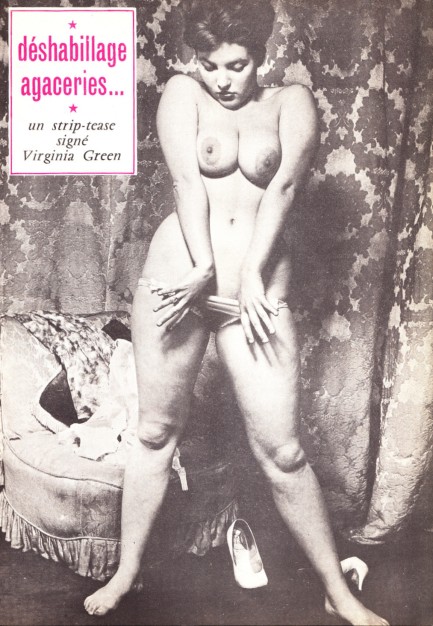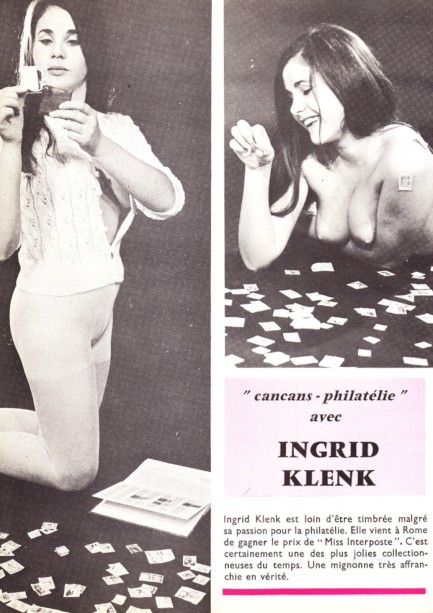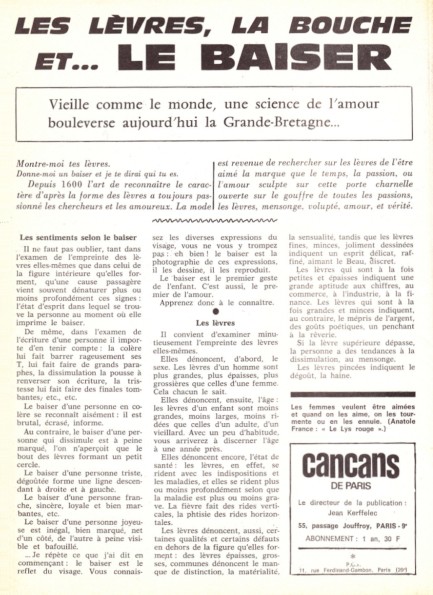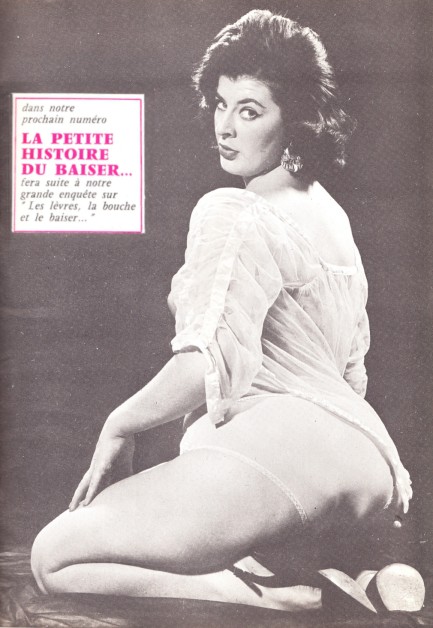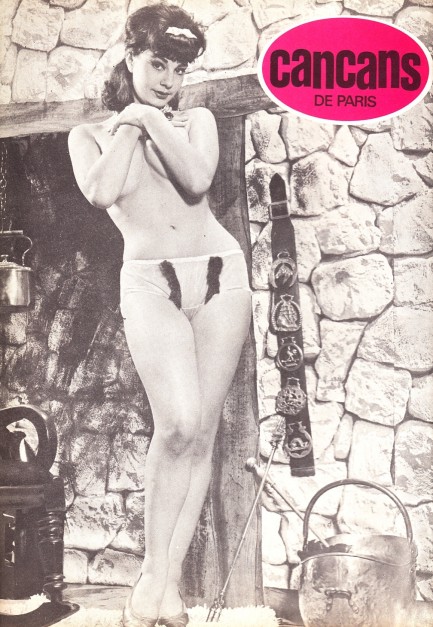 The anatomy and the ecstasy.  
We have a tremendous amount of material on burlesque in Pulp Intl., yet it's been eight years since we put together a full collection of mid-century burlesque dancers, go-go girls, and strippers. That day has arrived again. Above and below you see some of the better shots we've run across of late, featuring the famous and the obscure, the restrained and the explicit, the domestic and the foreign, and the blonde, red, brown, and brunette. Where possible we've identified the performer, such as above—that's Carol Ryva, sometimes known as Carol Riva, Carole von Ryva, Cara Rive, et al, a French dancer who rose to fame during the early 1960s. Other familiar faces you'll see are Lilly Christine, Maria Tuxedo, Gay Dawn, Yvonne Ménard, and Virginia Bell. Occasionally, when we post something that contains nudity, we feel, in this age of new puritanism that we should comment about it. We saw a survey recently indicating that a large percentage of Gen Z'ers think nudity in movies is unnecessary in all circumstances, especially sex scenes. And we're like, really? The wonderful thing that virtually every person does, or which practically everyone wants to do, and which is how nearly all of us came to be here on the planet, is somehow taboo, but the horrible thing that virtually none of us do—kill—must be part of nearly every film, book, and television show? Programming works. If you sell sexual shame unceasingly new generations will absorb it, and believe they've come to their views organically.
The reality is that sex and nudity are freeing. Burlesque and erotic dance are valuable because they take our DNA driven sexual desire and package it as an art form, fit for public consumption and contemplation. Moving one's body rhythmically feels good, and watching those who work so very hard but make look so easy the pushing of their physical limits within the realm of such expression is pleasing to the eye and psyche. That's why we love erotic dance. Our two previous burlesque collections, “Infinite Jest,” and “Dancers Gotta Dance,” are here and here, and we have some notable smaller burlesque forays here, here, and here. But if you want to kill some time for real, instead click the keyword “burlesque” at bottom, then scroll, scroll, scroll. Make sure you pack a lunch. Virginia Bell
Lee Sharon.
Dixie Brandy.
A group shot from the legendary Crazy Horse, Paris.
The incomparable Lilly Christine. We also have a set of photos from one of her performances here, and more links from that point.
 
The Follies Theater at 337 S. Main Street, Los Angeles, 1946.
Tempest Storm.
Gay Dawn.
Yvonne Ménard, and more photos here.
Carol Jane, aka Spider Woman.
  Jackie Miller.
    Debra Paget, who performed one of the most provocative screen dances ever in 1959's De indische grabmal. Debra Paget, who performed one of the most provocative screen dances ever in 1959's De indische grabmal.
 Blaze Starr. We also saw her recently here. Blaze Starr. We also saw her recently here.  
 Men's magazines come of age with Esquire. 
Esquire isn't a pulp magazine, but it's a seminal U.S. publication that goes back to that era, debuting in 1933 and becoming incredibly popular within only a few issues. Today's from this month in 1945 was given to us by a friend. It was an unexpected and generous gift. It's also an unusual one. Dimensionally it's thirteen inches by ten, a size we've only seen a couple of times before. That meant scanning pages in halves and assembling them digitally, and because Esquire was perfect-bound, the scanning meant the destruction of the issue. Inside, there's fiction from Richard Gehman, James Stern, George Wiswell, Maurice Zolotow, and others, accompanied by nice story art. There are also some brilliant portraits of show business celebrities—including Virginia Mayo, Vera Zorina, Dorothy Hart, Ann Miller, Daun Kennedy, and ballerina Milada Mladova.
But it's the ads that catch the eye. Advertising is a trip back in time, a look at what culture considered important, which is why we have a vintage ad feature in our sidebar. Esquire is packed with ads, chiefly for booze, smokes, and suits. Lots of suits. To think that artists sat at easels in studios producing these illustrations is an amazing thought—and bittersweet, considering how little artistic talent goes into advertising today. We picture the cast of Mad Men refreshing their creative reservoirs with an occasional drink, or even better, Darrin Stevens from Bewitched, struggling over his art pad until Samantha gives him a witchy boost. The ads are mostly signed—by the likes of Frederic Fellander, Jay Hyde Barnum, Robert Goodman, and J.N.C. Fenton. Enjoy the scans. We killed the magazine but it was worth it, we think. And thanks to Alex for the donation.
                       
 But only if they've got what it takes.  
It's time we got back to mid-century glamour model Virginia De Lee, so here she is starring on another high quality Technicolor lithograph. You can click her keywords below to see the others. This one is titled “Lola,” and has no specific publication date that we can find, but call it 1957 or a little later.
 Gordon and others get bushwacked in no-budget horse opera. 
L'éperon brûlant is a U.S. movie titled Hot Spur, but once again we found a foreign poster far more intriguing than the domestic version. The movie was originally released in 1968, but this poster is from France and was made for the movie's preimier there today in 1970. It's signed by the artist: Loris. We can't tell you anything about him or her except that they also painted posters for 1971's L’homme qui vient de la nuit and 1974's La virée superbe. This is an interesting effort.
We mainly wanted to watch this for raven brunette beauty Virginia Gordon, so imagine our suprise and dismay to see the filmmakers turn her into an unnatural blonde. In any case, the movie is nothing special—it's a Western revenge drama, poorly directed by Lee Frost of Policewomen fame, and poorly acted by Gordon and everyone else. Basically, a Mexican farmhand is driven by constant abuse to seek revenge, and does so by kidnapping his cruel employer's wife. Probably a bad idea.
The film takes advantage of the fraying censorship enforcement of the era to show more nudity and sexual violence than in previous years. There are themes embedded within the script about racism, patriarchal control, and what we'd call today male toxicity, but they're so obscured by sexploitative content that you'll be too busy feeling queasy to absorb any well-intentioned messaging. L'éperon brûlant/Hot Spur is basically a footnote suitable for true cineastes only. All others can give it a pass.
We decided to share this specific poster for a secondary reason. Users on both Alamy and Diomedia claim it as theirs, which is what happens when bloggers and Ebay sellers post high resolution images online to be hoovered up by opportunistic hustlers. Not that we don't sometimes get images from Ebay. This one came from there. But we don't try to claim false copyright on them. Once upon a time we considered uploading our thousands of original scans at huge sizes, but now the decision not to looks pretty smart. Many of those images would be on Alamy, Shutterstock, et al now.
In the last several years the problem of copyright squatters has grown, and with AI programs scouring the internet for instances of presumed infringement, threatening e-mails are increasingly going out to website operators. But once again, it needs to be pointed out that movie posters and promo shots were made for non-copyright holders to publicize the associated works, and such items fall into the category of fair use. The copyright on this poster belongs to the film studio or production company that originally made it (Les Films Leitienne), and isn't transferred just because someone uploaded it to Alamy or any other site. If you operate a blog and get a threatening e-mail, ask for documentation of copyright. They're obligated to provide that. But they won't be able to.     
 Joan is in her sweet spot with a challenging film role. 
How do you judge a great acting performance? One way is when beforehand you look at the performer and the part and say, “Impossible, doesn't fit, can't possibly work,” then it does. Flamingo Road, which premiered in the U.S today in 1949, features Joan Crawford as a carny performer and it doesn't fit. But probably nobody would seem to fit. The main character evolves over years from carny chippie into upper crust lady, so either way a filmmaker would have to make a difficult choice—cast an ingenue who evolves into a sophisticated middle-aged woman, or cast a mature actress and hope she can play young. They chose the later option with Crawford, and it can't possibly work. But this is Crawford we're talking about—she could make most any role work, and does so here with a typically assured performance.
Flamingo Road is set in the American south and is about the social mores and political machinations of a small but wealthy town. The title refers to the enclave where the rich and powerful live together in their mansions and manors. The carny version of Crawford falls for local deputy sherrif Zachary Scott, but he's been tabbed by local kingpin Sydney Greenstreet to be his puppet in the state senate. As part of that plan Scott is to marry into wealth. Cavorting with a carny isn't going to fly. Greenstreet decides to break them up, or hurt Crawford trying, and there's nothing so underhanded or injurious that he won't do it. Crawford, though, is tougher than anyone expects, and what she learns from her travails is, first: she's going to make it to Flamingo Road no matter what it takes; and second: she will have her revenge. That's all we'll tell you about the plot.
Flamingo Road is another of those movies that's often called a film noir, and while we don't try to be gatekeepers of what is and isn't noir—because we have no authority to do so—we also don't avoid stating the obvious. Flamingo Road isn't a film noir. Some entities, including respected ones, have a vested interest in casting the noir net as widely as possible. If you host noir festivals, for example, after a while you need to expand your defintion of noir to keep your slate fresh. If you write film noir books, you might want to demonstrate that you think outside the box by including Chinatown or Lat sau san taam or The Limey (all excellent movies, by the way).
At the opposite extreme, several prominent critics attest that film noir doesn't exist at all. That's like saying there's no such thing as superhero movies because costumed heroes are just further iterations of superpowered characters such as Rambo. Superhero movies exist. So does film noir, though it resides within the wider genres of crime and drama. However, it's too easy to call any movie with conflict and a few neon-splashed night sequences a noir. Film noir is as much thematic as it is iconographic. In every way that we can discern, Flamingo Road isn't one. The definitive American Film Institute calls it a melodrama. We agree. It's a melodrama in which a good actress, aged north of forty, overcomes difficult casting to knock her years-spanning role out of the park.
            
 Mid-century girly mags are always a winning draw. 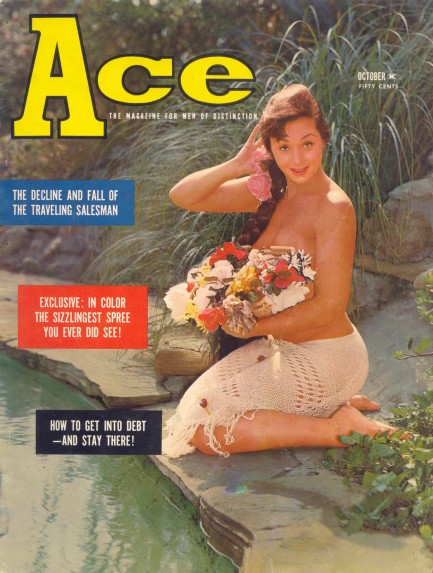
As the Cole Porter song goes, in olden days a glimpse of stocking was looked on as something shocking—and exemplifying that concept is Ace, the “magazine for men of distinction,” which debuted in 1957 during the height of the cheesecake era. In this day and age Ace is strictly kid stuff. But that's why it's cool to look back at. Like other publications of its ilk, Ace came along to fill the void left by the slow demise of mens adventure magazines, and as was typical, it grew more daring as the years went by, before finally folding in 1982, itself a victim of changing tastes and more rawness provided by porn mags.
This particular issue, published this month in 1960, features the usual mix of humor, adventure, and models, including the amusingly named Beverly Hills, aka Carla Henderson, who gets a spread inside plus the eye-catching rear cover, Eve Post, who the editors claim was discovered by Jack Benny, and Brandy Kayse, who poses as "Eve." Several of the models, such as Frances Beck, Lacey Kelly, Virginia Remo, and Pat Gregory, managed minor film roles. Elsewhere in the magazine there's plenty of nice art, plus the usual "fact" (men are polygamous?) and fiction. Multiple scans below.
 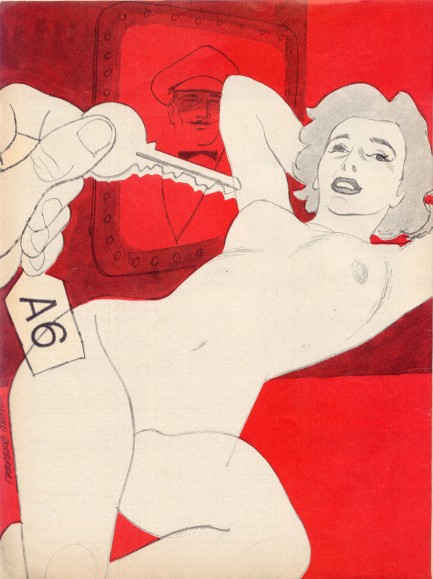 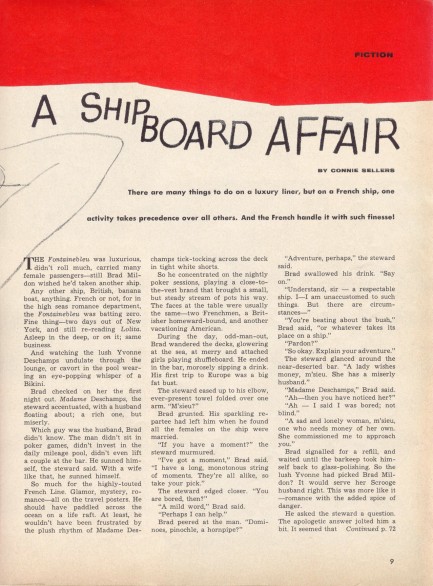 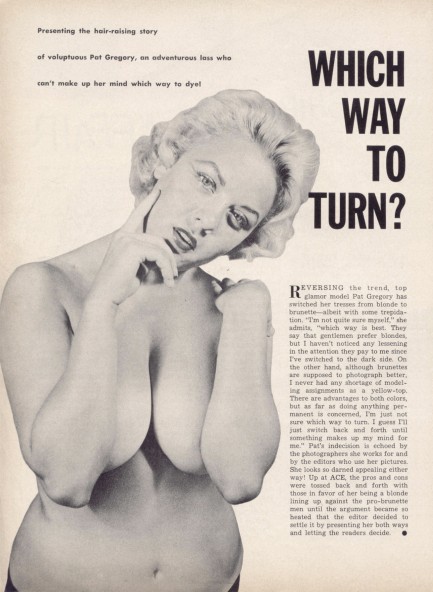 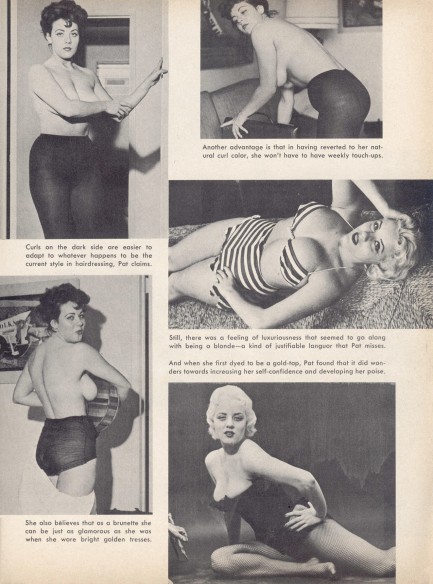 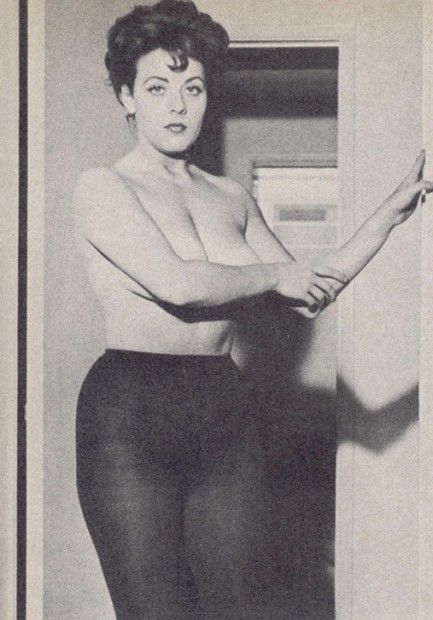 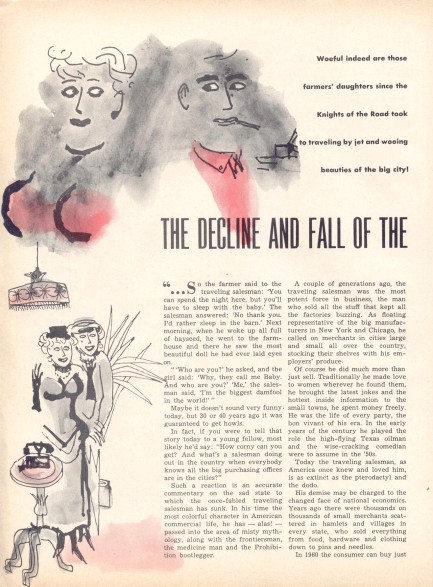 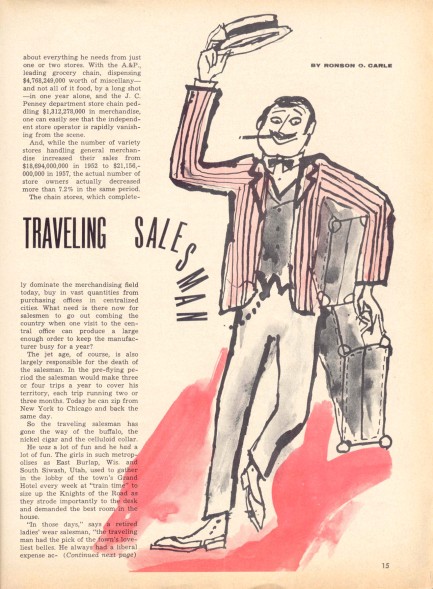 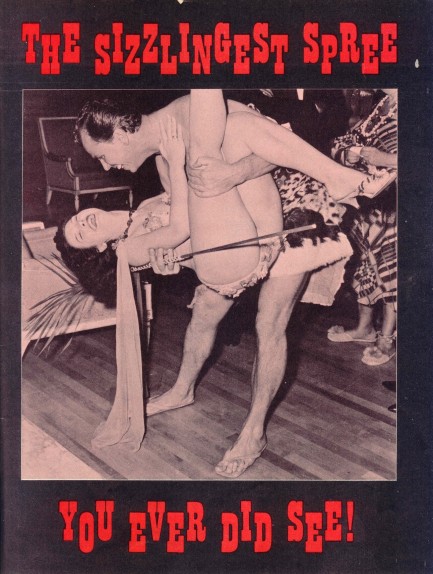 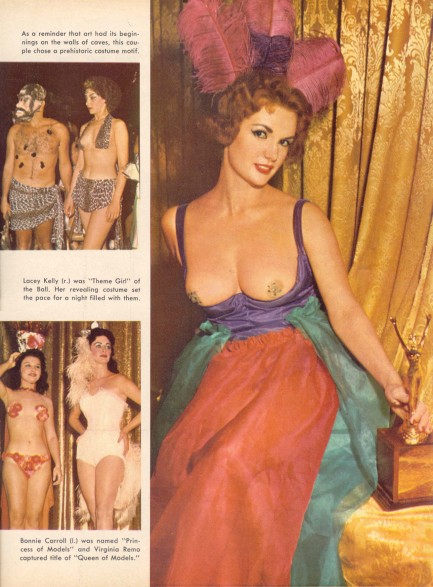 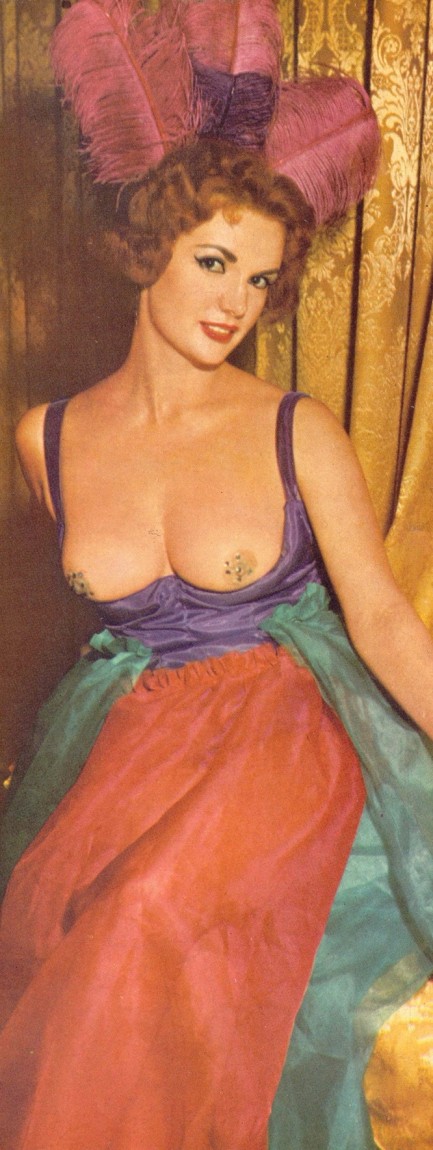 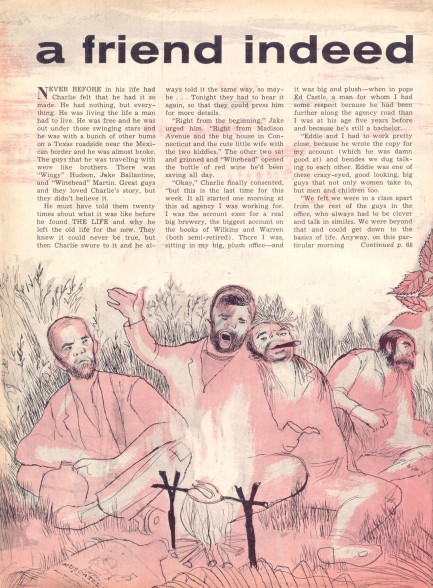 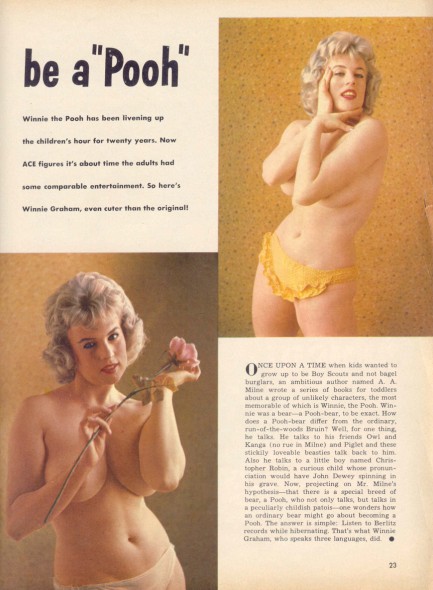 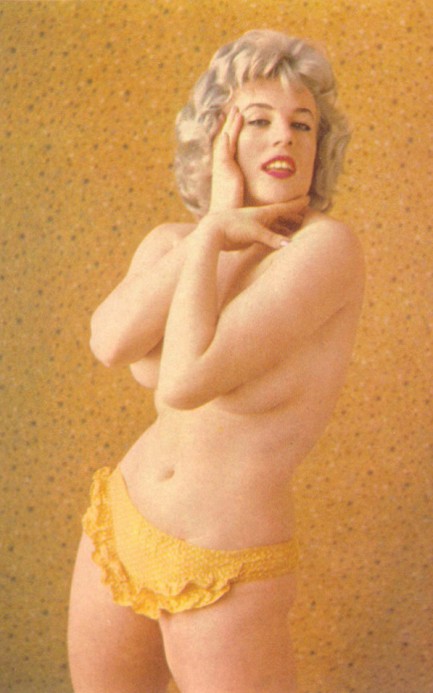 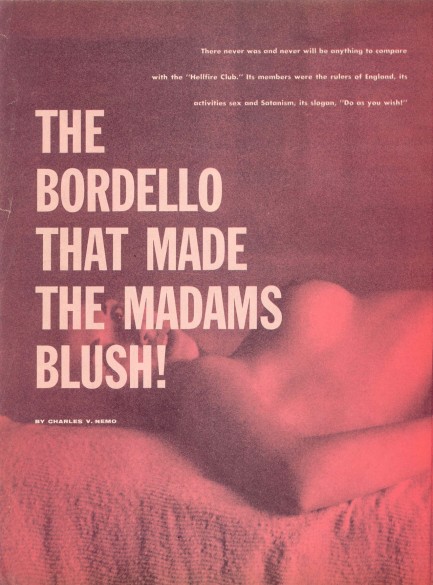 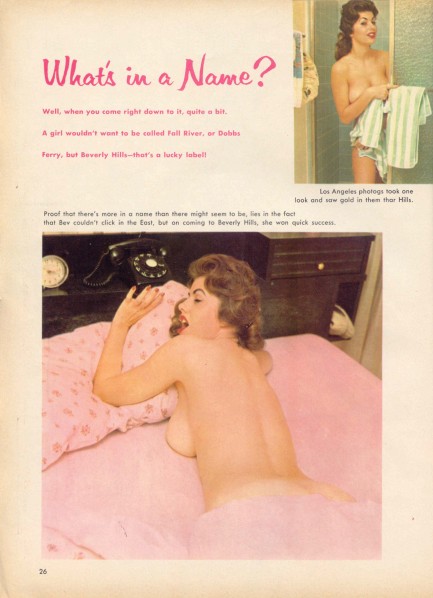 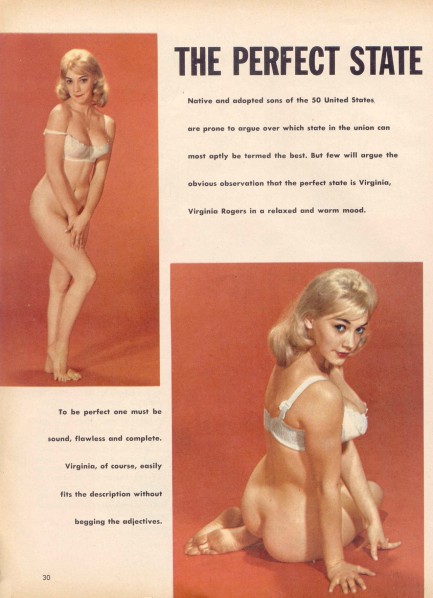 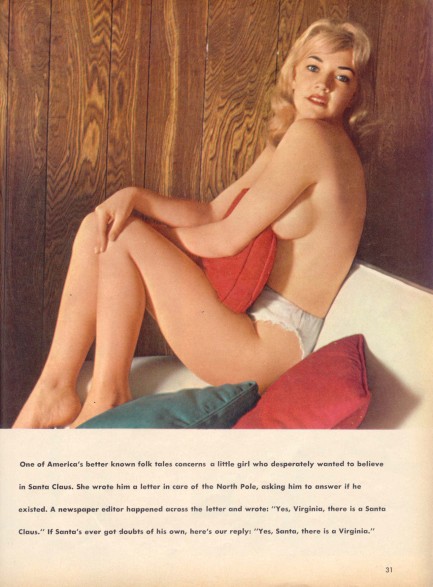 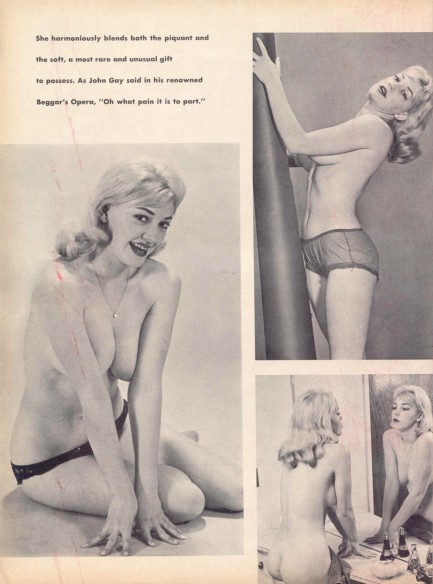 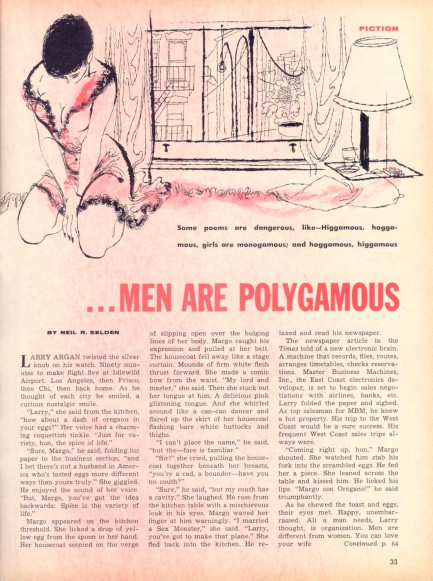 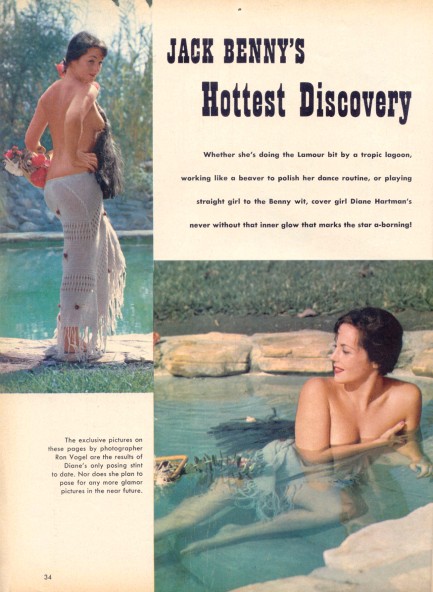 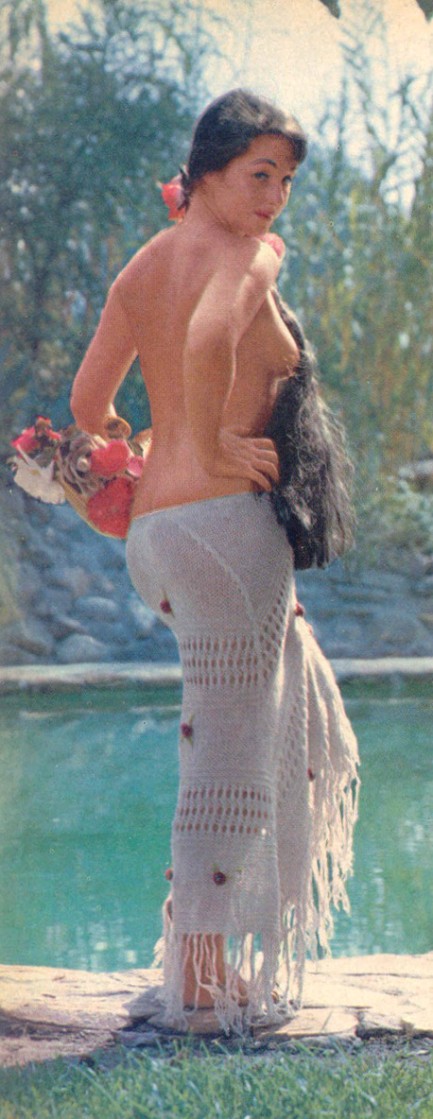 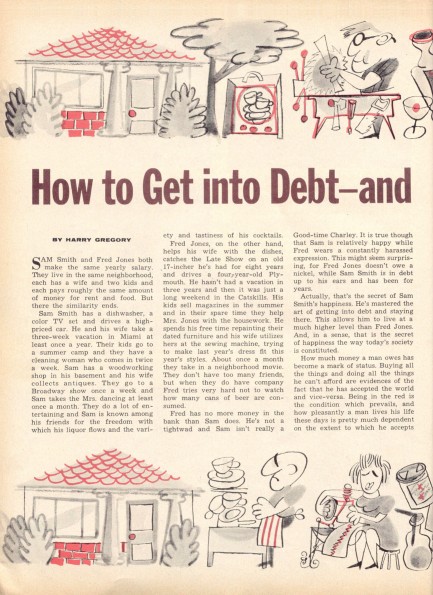  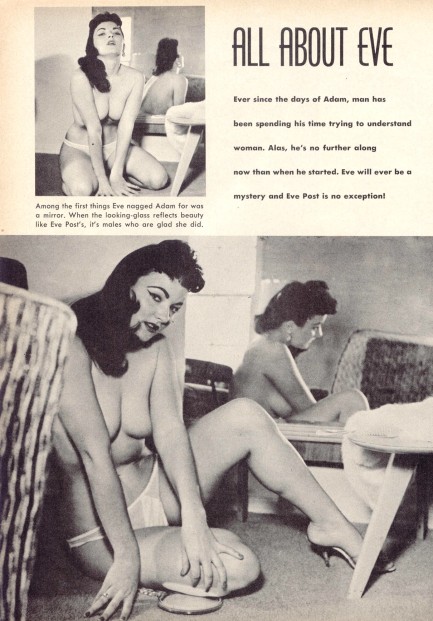 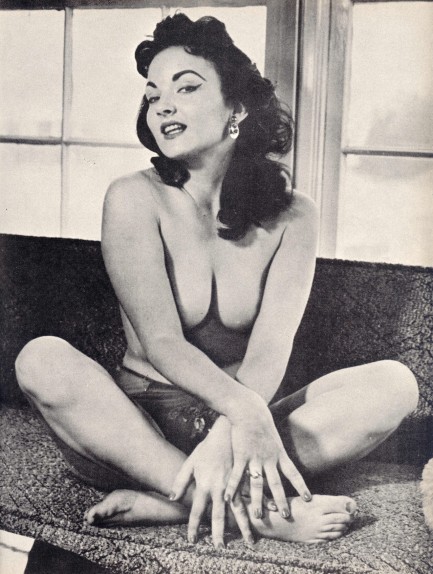 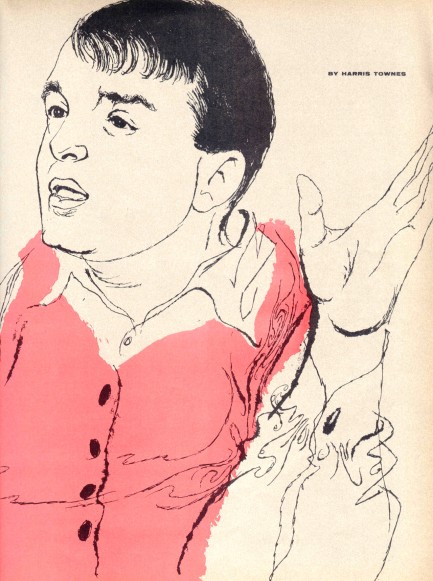 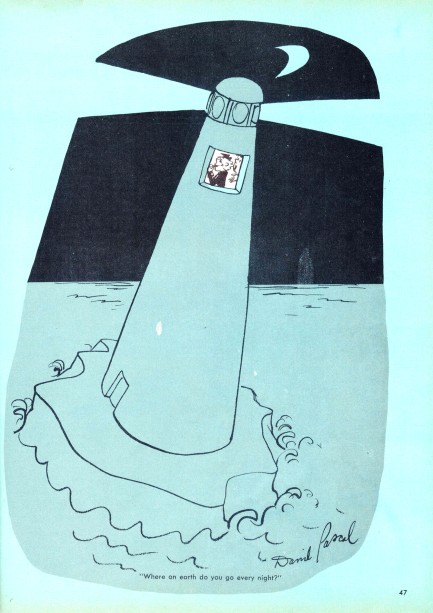 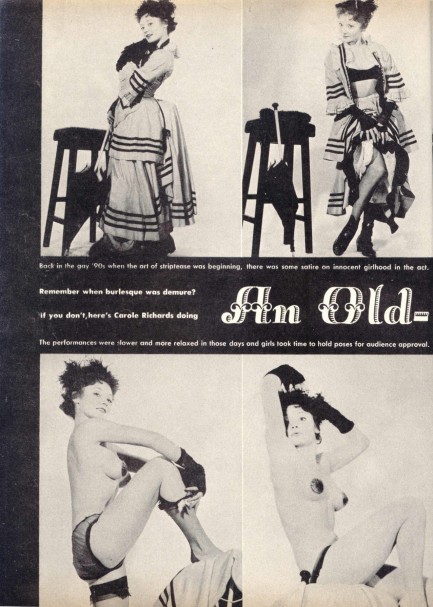 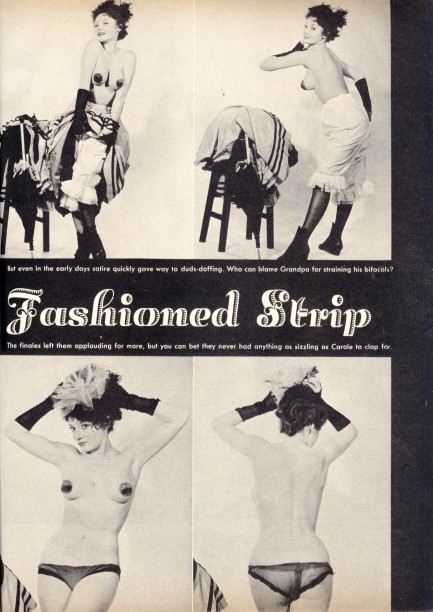 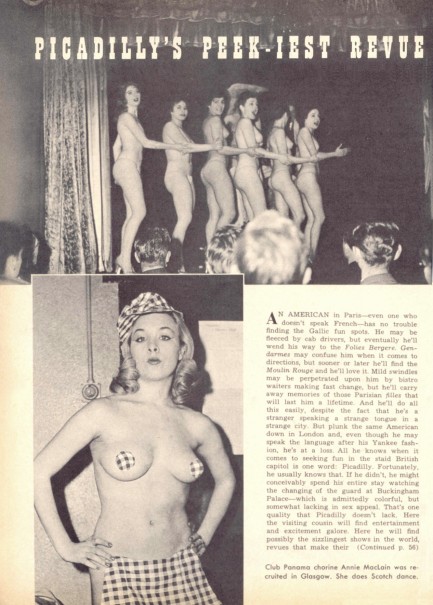 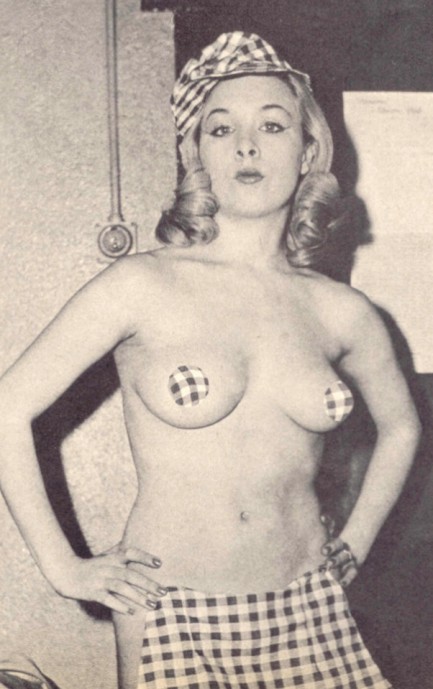 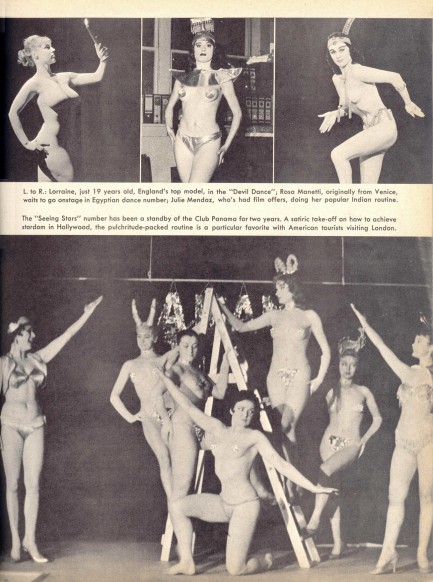 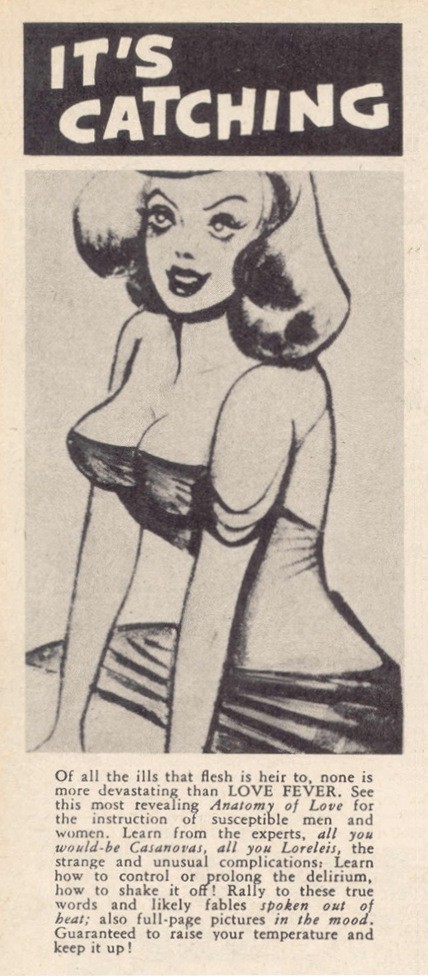 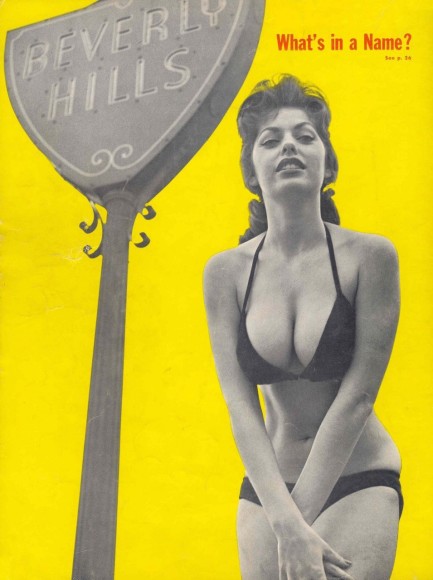
 Movie stars were always willing to give each other a hand. 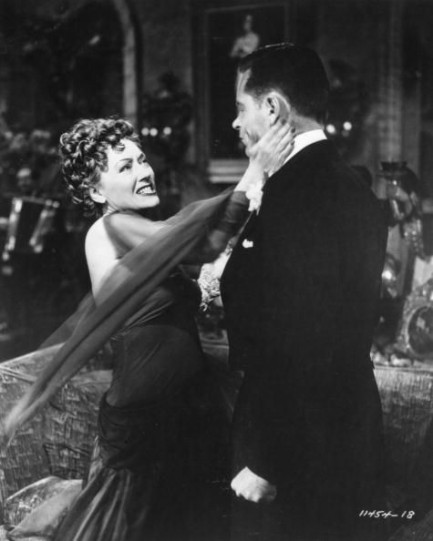
Once again we've been struck, so to speak, by the sheer number of cinema promo images featuring actors and actresses pretending to slap each other. They just keep turning up. The above shot is more about the neck than the face, but it still counts, as Gloria Swanson slaps William Holden in 1950's Sunset Boulevard. Below we have a bunch more, and you can see our previous collection at this link. Since we already discussed this phenomenon we won't get into it again, except briefly as follows: pretend slaps, film is not reality, and everyone should try to remember the difference. Many slaps below for your interest and wonder. 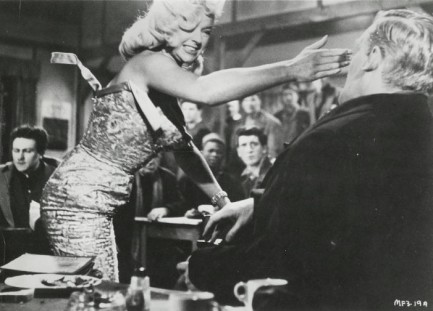 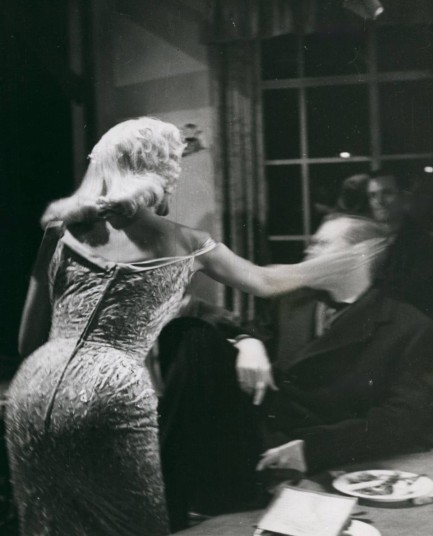 Diana Dors smacks Patrick Allen blurry in 1957's The Long Haul. Diana Dors smacks Patrick Allen blurry in 1957's The Long Haul.
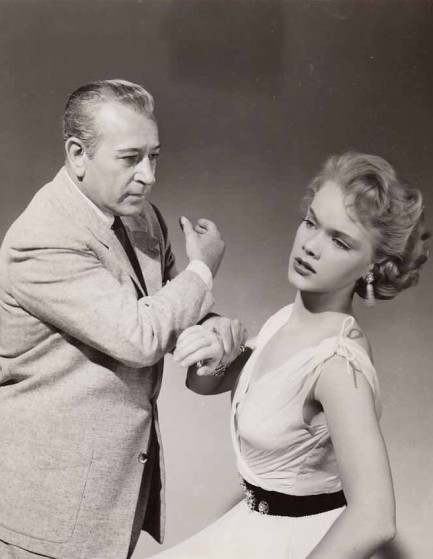 Mob boss George Raft menaces Anne Francis in a promo image made for 1954's Rogue Cop. Mob boss George Raft menaces Anne Francis in a promo image made for 1954's Rogue Cop.
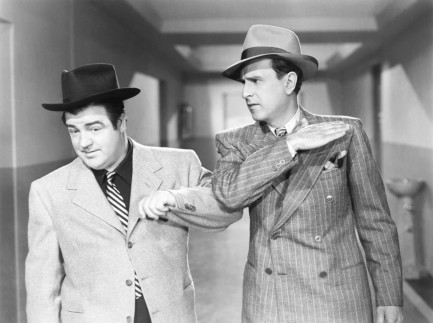 Bud Abbott gets aggressive with Lou Costello in 1945's Here Come the Co-Eds. Bud Abbott gets aggressive with Lou Costello in 1945's Here Come the Co-Eds.
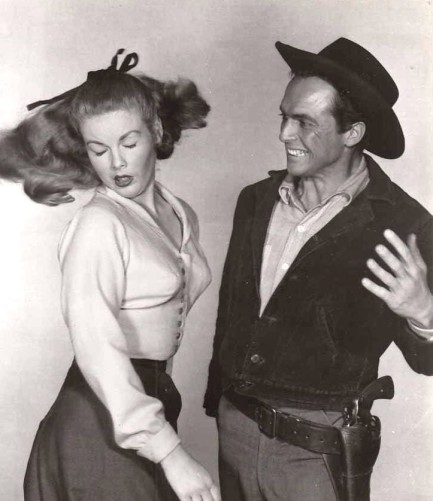 Jo Morrow takes one from black hat Jack Hogan in 1959's The Legend of Tom Dooley. Jo Morrow takes one from black hat Jack Hogan in 1959's The Legend of Tom Dooley.
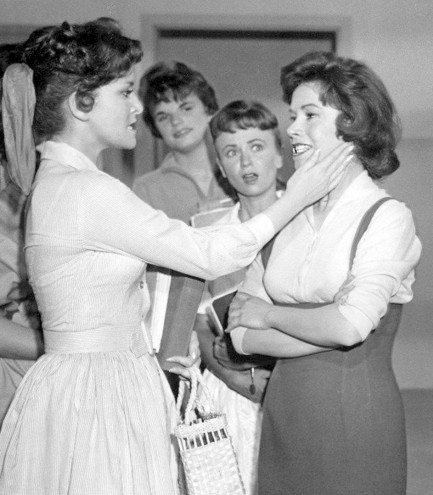 Chris Robinson and Anita Sands get a couple of things straight about who's on the yearbook committee in Diary of High School Bride. Chris Robinson and Anita Sands get a couple of things straight about who's on the yearbook committee in Diary of High School Bride.
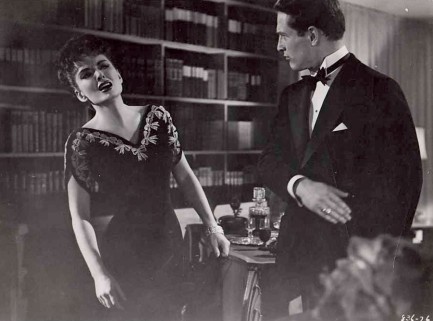 Paul Newman and Ann Blyth agree to disagree in 1957's The Helen Morgan Story. Paul Newman and Ann Blyth agree to disagree in 1957's The Helen Morgan Story.
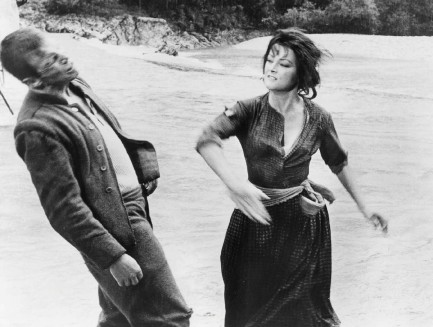 Verna Lisi shows Umberto Orsini who gives the orders in the 1967 film La ragazza e il generale, aka The Girl and the General. Verna Lisi shows Umberto Orsini who gives the orders in the 1967 film La ragazza e il generale, aka The Girl and the General.
 What the fuck did you just call me? Marki Bey slaps Betty Anne Rees loopy in the 1974 horror flick Sugar Hill. What the fuck did you just call me? Marki Bey slaps Betty Anne Rees loopy in the 1974 horror flick Sugar Hill.
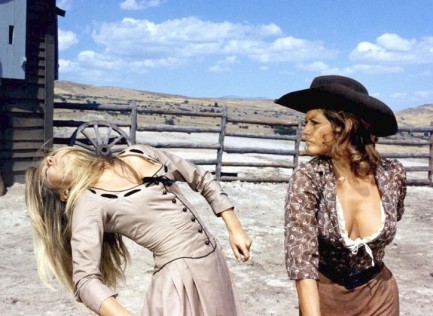 Claudia Cardinale slaps (or maybe punches—we can't remember) Brigitte Bardot in the 1971 western Les pétroleuses, known in English for some reason as The Legend of Frenchie King. Claudia Cardinale slaps (or maybe punches—we can't remember) Brigitte Bardot in the 1971 western Les pétroleuses, known in English for some reason as The Legend of Frenchie King.
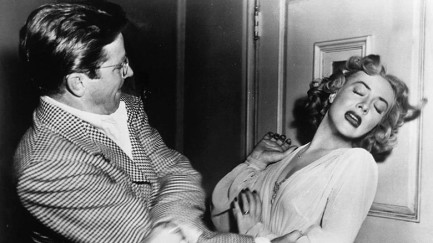 Audrey Totter reels under the attentions of Richard Basehart in 1949 Tension. We're thinking it was probably even more tense after this moment. Audrey Totter reels under the attentions of Richard Basehart in 1949 Tension. We're thinking it was probably even more tense after this moment.
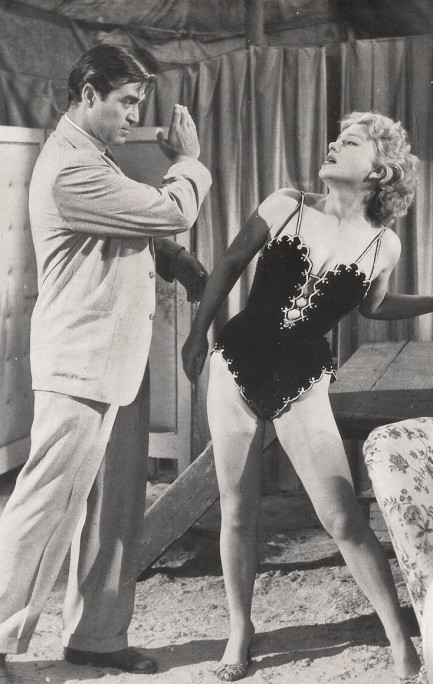 Anne Baxter tries to no avail to avoid a slap from heel Steve Cochran in 1954's Carnival Story. Anne Baxter tries to no avail to avoid a slap from heel Steve Cochran in 1954's Carnival Story.
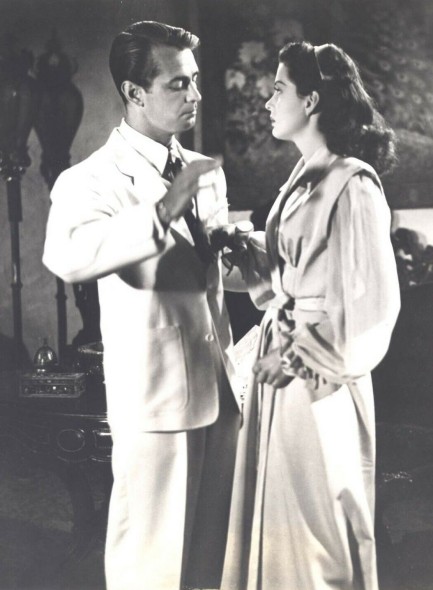 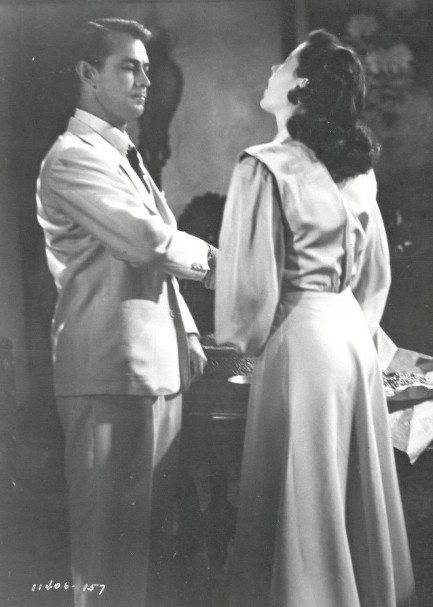 Though Alan Ladd was a little guy who Gail Russell probably could have roughed up if she wanted, the script called for him to slap her, and he obeyed in the 1946 adventure Calcutta. Though Alan Ladd was a little guy who Gail Russell probably could have roughed up if she wanted, the script called for him to slap her, and he obeyed in the 1946 adventure Calcutta.
 Peter Alexander guards his right cheek, therefore Hannelore Auer crosses him up and attacks his left in 1964's Schwejk's Flegeljahre, aka Schweik's Years of Indiscretion. Peter Alexander guards his right cheek, therefore Hannelore Auer crosses him up and attacks his left in 1964's Schwejk's Flegeljahre, aka Schweik's Years of Indiscretion.
 Elizabeth Ashley gives Roddy McDowall a facial in in 1965's The Third Day. Elizabeth Ashley gives Roddy McDowall a facial in in 1965's The Third Day.
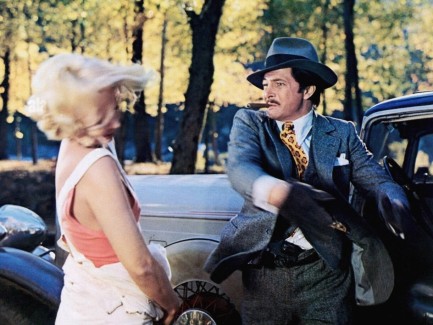 Tony Anthony slaps Lucretia Love in 1972's Piazza pulita, aka Pete, Pearl and the Pole. Tony Anthony slaps Lucretia Love in 1972's Piazza pulita, aka Pete, Pearl and the Pole. 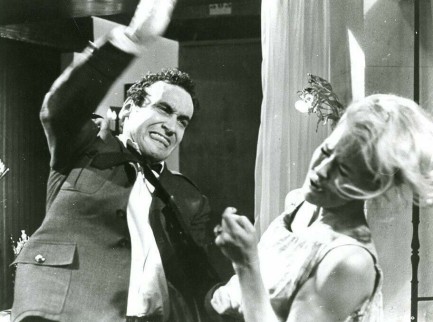 André Oumansky goes backhand on Lola Albright in 1964's Joy House. André Oumansky goes backhand on Lola Albright in 1964's Joy House.
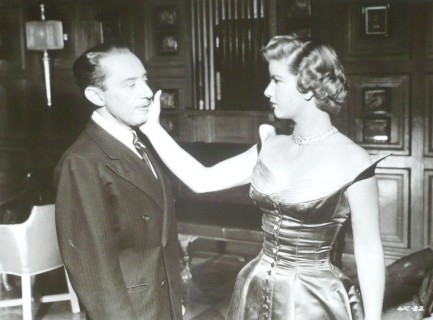 Frank Ferguson catches one from Barbara Bel Geddes in the 1949 drama Caught. Frank Ferguson catches one from Barbara Bel Geddes in the 1949 drama Caught.
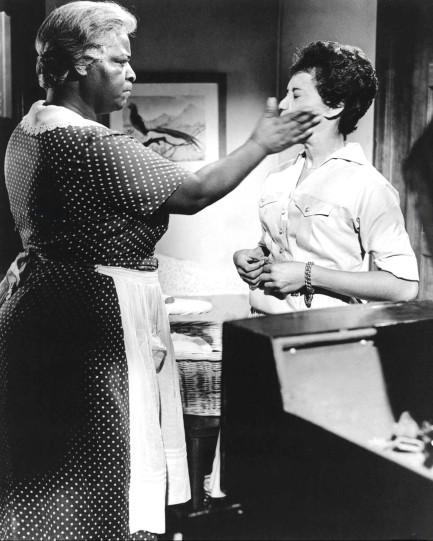 This looks like a real slap, so you have to credit the actresses for their commitment. It's from 1961's Raisin in the Sun and shows Claudia McNeil rearranging the face of Diana Sands. This looks like a real slap, so you have to credit the actresses for their commitment. It's from 1961's Raisin in the Sun and shows Claudia McNeil rearranging the face of Diana Sands.
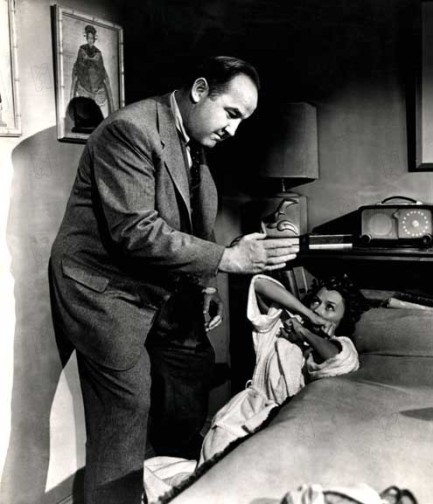 Gloria Grahame finds herself cornered by Broderick Crawford in 1954's Human Desire. Gloria Grahame finds herself cornered by Broderick Crawford in 1954's Human Desire.
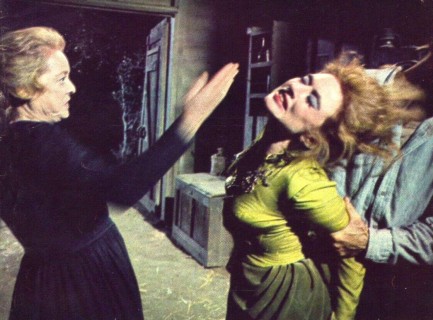 Bette Davis, an experienced slapper and slappee, gets a little assistance from an unidentified third party as she goes Old West on Amanda Blake in a 1966 episode of Gunsmoke called “The Jailer.” Bette Davis, an experienced slapper and slappee, gets a little assistance from an unidentified third party as she goes Old West on Amanda Blake in a 1966 episode of Gunsmoke called “The Jailer.”
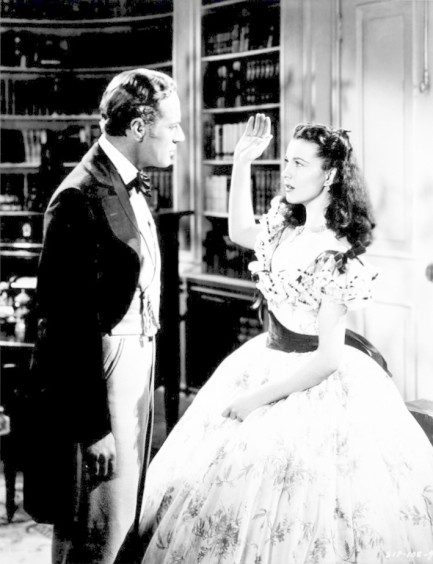 There are a few slaps in 1939's Gone with the Wind, so we had our pick. We went with Vivien Leigh and Leslie Howard. There are a few slaps in 1939's Gone with the Wind, so we had our pick. We went with Vivien Leigh and Leslie Howard.
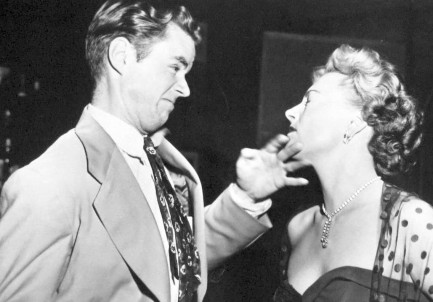 Virginia Field takes one on the chin from Marshall Thompson in Dial 1119. Virginia Field takes one on the chin from Marshall Thompson in Dial 1119.
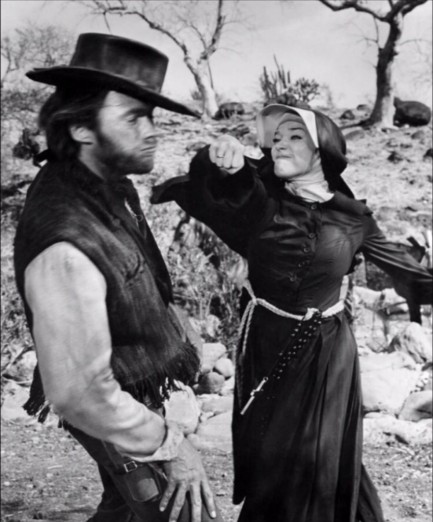 Clint Eastwood absorbs a right cross from nun Shirley MacLaine in 1970's Two Mules for Sister Sara. Clint Eastwood absorbs a right cross from nun Shirley MacLaine in 1970's Two Mules for Sister Sara.
 No, seriously. I said come and get me. Don't just stand there. Or... did I interrupt something? 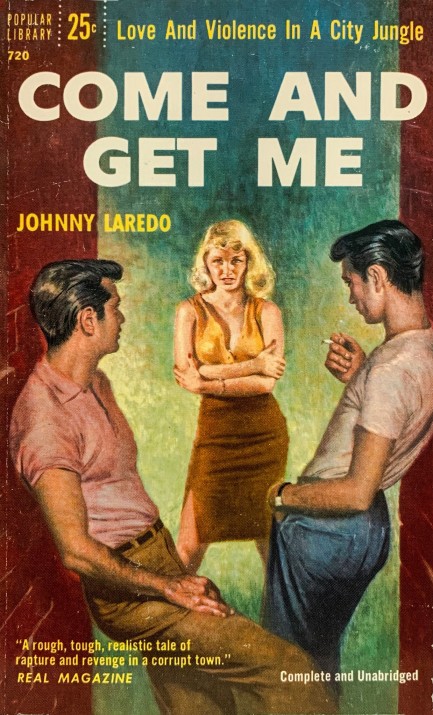
Above is a cover for Johnny Laredo's Come and Get Me, copyright 1956 from Popular Library. Think Laredo is a pseudonym? You think correctly. The publishers make a big deal out of keeping his real identity secret, writing a blurb inside the book calling Laredo, “the pseudonym of a young fiction writer whose stories have appeared in Argosy, The Virginia Quarterly Review, Cosmopolitan, and Bluebook.” Why an extensively published author wanted no credit for this book is a mystery, but the gig is up—he was Gene Caesar, a writer who had an affinity for westerns, but here crafted a crime drama about a man bent on avenging the murder of his girlfriend. The art, which we love because it can be interpreted a couple of ways, is by Raymond Johnson.
 She was supposed to bring the chips and dip, but she showed up with nothing. 
It's time once again for a visit with Virginia De Lee, obscure but lovely model of the mid-century period, star of several nice Technicolor lithographs, and darling of men's magazine fans from coast to coast. Usually she's a flaming redhead, but here she's dark, and that's absolutely fine. But we've seen two other frames from the session, and the hair is a pre-press color change. In the other shots she's her usual flame-topped self. Maybe we'll show you one of those later. But if you just can't wait, see more of her here, here, here, and here.

|
 |

The headlines that mattered yesteryear.
2003—Hope Dies
Film legend Bob Hope dies of pneumonia two months after celebrating his 100th birthday. 1945—Churchill Given the Sack
In spite of admiring Winston Churchill as a great wartime leader, Britons elect
Clement Attlee the nation's new prime minister in a sweeping victory for the Labour Party over the Conservatives. 1952—Evita Peron Dies
Eva Duarte de Peron, aka Evita, wife of the president of the Argentine Republic, dies from cancer at age 33. Evita had brought the working classes into a position of political power never witnessed before, but was hated by the nation's powerful military class. She is lain to rest in Milan, Italy in a secret grave under a nun's name, but is eventually returned to Argentina for reburial beside her husband in 1974. 1943—Mussolini Calls It Quits
Italian dictator Benito Mussolini steps down as head of the armed forces and the government. It soon becomes clear that Il Duce did not relinquish power voluntarily, but was forced to resign after former Fascist colleagues turned against him. He is later installed by Germany as leader of the Italian Social Republic in the north of the country, but is killed by partisans in 1945.
|

|
|

It's easy. We have an uploader that makes it a snap. Use it to submit your art, text, header, and subhead. Your post can be funny, serious, or anything in between, as long as it's vintage pulp. You'll get a byline and experience the fleeting pride of free authorship. We'll edit your post for typos, but the rest is up to you. Click here to give us your best shot.

|
|









































































































































 Diana Dors smacks Patrick Allen blurry in 1957's The Long Haul.
Diana Dors smacks Patrick Allen blurry in 1957's The Long Haul. Mob boss George Raft menaces Anne Francis in a promo image made for 1954's Rogue Cop.
Mob boss George Raft menaces Anne Francis in a promo image made for 1954's Rogue Cop. Bud Abbott gets aggressive with Lou Costello in 1945's Here Come the Co-Eds.
Bud Abbott gets aggressive with Lou Costello in 1945's Here Come the Co-Eds. Jo Morrow takes one from black hat Jack Hogan in 1959's The Legend of Tom Dooley.
Jo Morrow takes one from black hat Jack Hogan in 1959's The Legend of Tom Dooley. Chris Robinson and Anita Sands get a couple of things straight about who's on the yearbook committee in Diary of High School Bride.
Chris Robinson and Anita Sands get a couple of things straight about who's on the yearbook committee in Diary of High School Bride. Paul Newman and Ann Blyth agree to disagree in 1957's The Helen Morgan Story.
Paul Newman and Ann Blyth agree to disagree in 1957's The Helen Morgan Story. Verna Lisi shows Umberto Orsini who gives the orders in the 1967 film La ragazza e il generale, aka The Girl and the General.
Verna Lisi shows Umberto Orsini who gives the orders in the 1967 film La ragazza e il generale, aka The Girl and the General. What the fuck did you just call me? Marki Bey slaps Betty Anne Rees loopy in the 1974 horror flick Sugar Hill.
What the fuck did you just call me? Marki Bey slaps Betty Anne Rees loopy in the 1974 horror flick Sugar Hill. Claudia Cardinale slaps (or maybe punches—we can't remember) Brigitte Bardot in the 1971 western Les pétroleuses, known in English for some reason as The Legend of Frenchie King.
Claudia Cardinale slaps (or maybe punches—we can't remember) Brigitte Bardot in the 1971 western Les pétroleuses, known in English for some reason as The Legend of Frenchie King. Audrey Totter reels under the attentions of Richard Basehart in 1949 Tension. We're thinking it was probably even more tense after this moment.
Audrey Totter reels under the attentions of Richard Basehart in 1949 Tension. We're thinking it was probably even more tense after this moment. Anne Baxter tries to no avail to avoid a slap from heel Steve Cochran in 1954's Carnival Story.
Anne Baxter tries to no avail to avoid a slap from heel Steve Cochran in 1954's Carnival Story.
 Though Alan Ladd was a little guy who Gail Russell probably could have roughed up if she wanted, the script called for him to slap her, and he obeyed in the 1946 adventure Calcutta.
Though Alan Ladd was a little guy who Gail Russell probably could have roughed up if she wanted, the script called for him to slap her, and he obeyed in the 1946 adventure Calcutta. Peter Alexander guards his right cheek, therefore Hannelore Auer crosses him up and attacks his left in 1964's Schwejk's Flegeljahre, aka Schweik's Years of Indiscretion.
Peter Alexander guards his right cheek, therefore Hannelore Auer crosses him up and attacks his left in 1964's Schwejk's Flegeljahre, aka Schweik's Years of Indiscretion. Elizabeth Ashley gives Roddy McDowall a facial in in 1965's The Third Day.
Elizabeth Ashley gives Roddy McDowall a facial in in 1965's The Third Day. Tony Anthony slaps Lucretia Love in 1972's Piazza pulita, aka Pete, Pearl and the Pole.
Tony Anthony slaps Lucretia Love in 1972's Piazza pulita, aka Pete, Pearl and the Pole. André Oumansky goes backhand on Lola Albright in 1964's Joy House.
André Oumansky goes backhand on Lola Albright in 1964's Joy House. Frank Ferguson catches one from Barbara Bel Geddes in the 1949 drama Caught.
Frank Ferguson catches one from Barbara Bel Geddes in the 1949 drama Caught. This looks like a real slap, so you have to credit the actresses for their commitment. It's from 1961's Raisin in the Sun and shows Claudia McNeil rearranging the face of Diana Sands.
This looks like a real slap, so you have to credit the actresses for their commitment. It's from 1961's Raisin in the Sun and shows Claudia McNeil rearranging the face of Diana Sands. Gloria Grahame finds herself cornered by Broderick Crawford in 1954's Human Desire.
Gloria Grahame finds herself cornered by Broderick Crawford in 1954's Human Desire. Bette Davis, an experienced slapper and slappee, gets a little assistance from an unidentified third party as she goes Old West on Amanda Blake in a 1966 episode of Gunsmoke called “The Jailer.”
Bette Davis, an experienced slapper and slappee, gets a little assistance from an unidentified third party as she goes Old West on Amanda Blake in a 1966 episode of Gunsmoke called “The Jailer.” There are a few slaps in 1939's Gone with the Wind, so we had our pick. We went with Vivien Leigh and Leslie Howard.
There are a few slaps in 1939's Gone with the Wind, so we had our pick. We went with Vivien Leigh and Leslie Howard. Virginia Field takes one on the chin from Marshall Thompson in Dial 1119.
Virginia Field takes one on the chin from Marshall Thompson in Dial 1119. Clint Eastwood absorbs a right cross from nun Shirley MacLaine in 1970's Two Mules for Sister Sara.
Clint Eastwood absorbs a right cross from nun Shirley MacLaine in 1970's Two Mules for Sister Sara.
